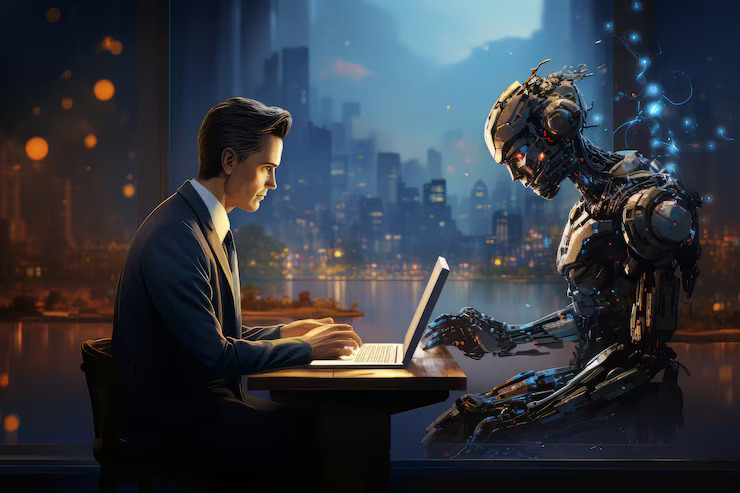Artificial Intelligence, commonly known as AI, is one of the most transformative forces in modern society. But what is AI, really? At its core, AI refers to machines or computer systems that can perform tasks that normally require human intelligence—such as recognizing speech, understanding language, making decisions, solving problems, and even learning from experience. Far from being a futuristic concept, AI is already embedded in many parts of everyday life, quietly powering the tools and services people use daily. This article explores how AI works, the different types of AI, and how it’s reshaping the way people live, work, and connect in 2025.
Understanding the Basics of Artificial Intelligence
Artificial Intelligence encompasses a range of technologies designed to mimic human cognitive functions. These include machine learning (ML), where systems learn from data and improve over time, and deep learning, a more advanced form that uses neural networks to simulate human thought processes. Natural language processing (NLP), computer vision, and robotics also fall under the AI umbrella.
There are two broad types of AI: narrow AI and general AI. Narrow AI is designed for specific tasks—like recommending movies on Netflix or detecting spam emails—while general AI, which remains largely theoretical, would match or surpass human intelligence across multiple domains.
AI at Home: Making Life Smarter and Simpler
From the moment people wake up to when they go to bed, AI touches their lives in subtle but significant ways. Smart home devices like voice assistants can turn on the lights, adjust the thermostat, or play a favorite song with a simple voice command. Smart refrigerators can suggest recipes based on what’s inside, while robot vacuums map and clean homes without supervision.
Streaming services use AI algorithms to recommend shows that match a viewer’s preferences. Even smartphones are powered by AI—from facial recognition to virtual keyboards that predict what users are going to type next. These conveniences often go unnoticed, yet they are powered by sophisticated AI systems that adapt to user behavior over time.
AI in Transportation: Safer Roads and Smarter Travel
AI is revolutionizing transportation in major ways. Navigation apps like Google Maps or Waze analyze real-time traffic patterns to suggest faster routes. Ride-sharing platforms use AI to match drivers with riders efficiently and predict arrival times.
In the automotive world, AI is driving the development of autonomous vehicles. While fully self-driving cars are still being refined, many modern vehicles already feature AI-driven systems like lane assist, adaptive cruise control, and automated emergency braking. These advancements not only enhance safety but also reduce the cognitive load on drivers, making commutes less stressful.
AI at Work: Automating Tasks and Enhancing Productivity
Across industries, AI is changing the way people work. In offices, AI tools streamline workflows by automating repetitive tasks like data entry, scheduling, and even generating reports. AI-powered chatbots handle customer service inquiries 24/7, improving response times and satisfaction.
In creative industries, AI assists with everything from designing logos to writing content and generating music. Meanwhile, in more technical fields like healthcare and finance, AI algorithms analyze massive datasets to spot patterns that humans might miss. This enables faster diagnoses, smarter investments, and better decision-making overall.
Even recruitment and hiring have become more data-driven, with AI screening resumes and identifying the best-fit candidates based on job descriptions and previous hiring patterns.
AI in Education: Personalized Learning for Every Student
AI is also making a mark in education by creating more personalized learning experiences. Adaptive learning platforms analyze student performance and adjust the difficulty of questions in real time, ensuring each learner progresses at their own pace.
Virtual tutors powered by AI can assist students outside of classroom hours, offering instant feedback and explanations. Teachers benefit too—AI tools can help grade assignments, identify learning gaps, and suggest interventions based on student behavior and performance trends.
As education continues to shift toward hybrid and remote models, AI helps bridge the gap by offering customized, accessible support for learners worldwide.
AI in Healthcare: Faster Diagnoses and Smarter Treatment
Healthcare is one of the most promising areas for AI innovation. AI algorithms can process vast amounts of medical data—from imaging scans to genetic information—and assist doctors in diagnosing conditions like cancer, heart disease, and neurological disorders with remarkable speed and accuracy.
Virtual health assistants provide symptom checks, medication reminders, and even mental health support through conversational interfaces. Hospitals use AI to manage staffing, patient flow, and supply chains more efficiently.
Wearable devices like smartwatches monitor heart rate, sleep patterns, and physical activity in real-time, alerting users and healthcare providers to potential health issues before they escalate. AI is helping to shift healthcare from reactive to preventive, saving lives and reducing costs.
The Ethical Side of AI: Bias, Privacy, and Accountability
Despite its benefits, AI brings significant challenges that society must address. One major concern is algorithmic bias—where AI systems unintentionally reflect and amplify existing inequalities. If an AI model is trained on biased data, it may produce discriminatory outcomes in areas like hiring, lending, or law enforcement.
Privacy is another critical issue. AI systems often require large amounts of personal data to function effectively, raising concerns about how that data is collected, stored, and used. There are ongoing discussions about the need for clear regulations to ensure that AI operates transparently and ethically.
Accountability is also key. When AI makes decisions—especially in high-stakes areas like healthcare or criminal justice—there must be mechanisms to understand, audit, and challenge those decisions. As AI becomes more autonomous, striking the right balance between innovation and regulation will be essential.
How AI Is Reshaping Human Interaction
AI isn’t just changing tasks—it’s altering how people interact with technology and each other. Virtual assistants and chatbots have become more conversational, making digital interactions feel more human. Social media platforms use AI to curate feeds, moderate content, and recommend connections, influencing how people discover information and form relationships.
Even in dating and personal relationships, AI is playing a role. Apps use algorithms to suggest matches based on preferences and behavior. In some cases, AI-driven virtual companions are being developed to offer emotional support and companionship.
These shifts raise deeper questions about authenticity, empathy, and the role of technology in human connection. As AI continues to evolve, it’s important to keep these social and emotional dimensions in mind.
Final Thoughts: Living in an AI-Augmented World
Artificial Intelligence is no longer a distant concept reserved for tech labs and science fiction. It’s a powerful tool that is actively shaping how people live, work, learn, and connect. From smart homes and personalized shopping to life-saving medical insights and dynamic learning platforms, AI is woven into the fabric of daily life.
Understanding what AI is—and recognizing how it’s impacting society—allows individuals to engage with it more thoughtfully and responsibly. The challenge now is not just to keep up with AI, but to shape its future in a way that benefits everyone. With the right balance of innovation, ethics, and human oversight, AI can continue to be a force for good in a rapidly changing world.




